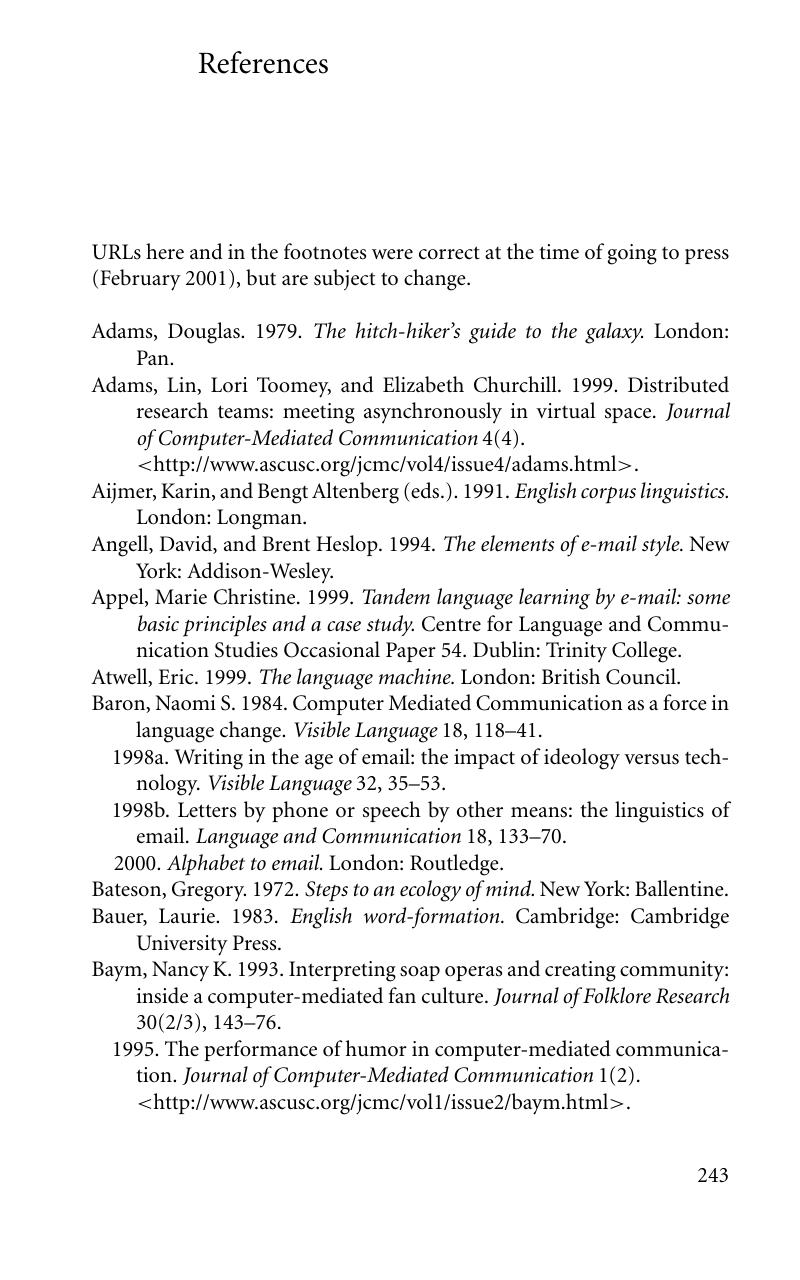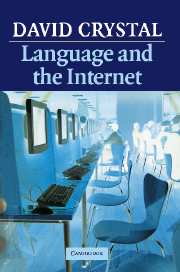Book contents
- Frontmatter
- Contents
- Preface
- 1 A linguistic perspective
- 2 The medium of Netspeak
- 3 Finding an identity
- 4 The language of e-mail
- 5 The language of chatgroups
- 6 The language of virtual worlds
- 7 The language of the Web
- 8 The linguistic future of the Internet
- References
- Index of authors
- Index of topics
- References
- Frontmatter
- Contents
- Preface
- 1 A linguistic perspective
- 2 The medium of Netspeak
- 3 Finding an identity
- 4 The language of e-mail
- 5 The language of chatgroups
- 6 The language of virtual worlds
- 7 The language of the Web
- 8 The linguistic future of the Internet
- References
- Index of authors
- Index of topics
- References
Summary

- Type
- Chapter
- Information
- Language and the Internet , pp. 243 - 252Publisher: Cambridge University PressPrint publication year: 2001



